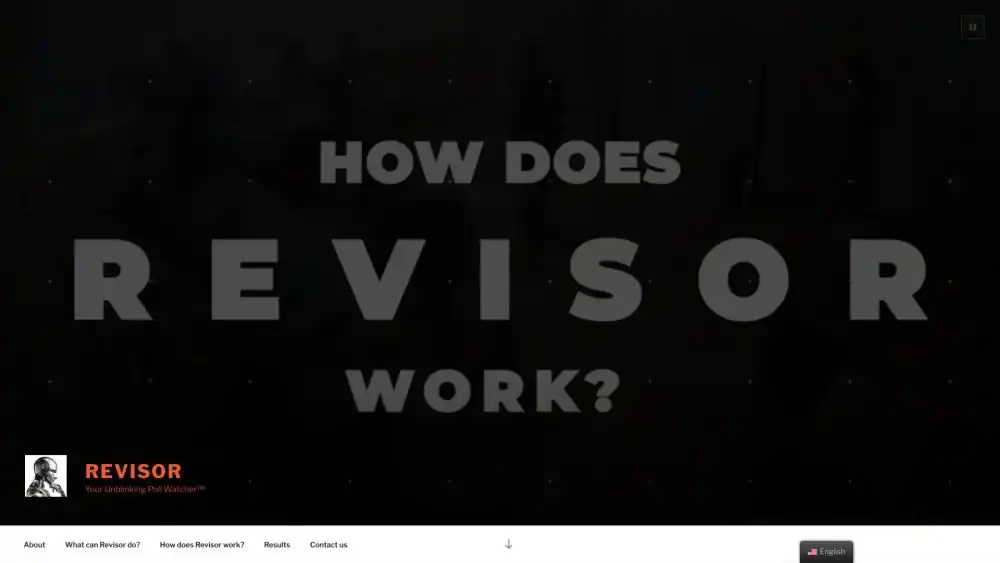Let’s Craft an Introduction for Your Reviser
Understanding Your Needs
To create an effective introduction for your reviser, I’ll need more context. Please provide details about:
- Target audience: Who are you trying to reach with your reviser (students, writers, professionals)?
- Purpose: What problem does your reviser solve (grammar, style, clarity, etc.)?
- Unique selling points: What sets your reviser apart from others (speed, accuracy, features)?
- Desired tone: How do you want to sound (professional, friendly, authoritative)?
Possible Introduction Structures
Once we have a clearer picture, we can choose from these introduction styles:
- Direct and informative: Clearly state the problem your reviser solves and how it does so.
- Engaging story: Share a relatable anecdote about writing struggles to capture the reader’s attention.
- Question-based: Pose a thought-provoking question about writing challenges to pique curiosity.
- Benefit-focused: Highlight the advantages of using your reviser for the reader.
Example Introduction (placeholder)
Assuming your target audience is students and your reviser focuses on grammar and clarity
Direct and informative:
“Struggling with grammar and unclear sentences? Meet our AI-powered writing assistant. Our reviser meticulously analyzes your text, identifies errors, and offers clear suggestions to improve your writing. Achieve academic success with confidence.”
Would you like to provide more details about your reviser so we can tailor the introduction accordingly?
Pros and Cons of Using a Reviser
Pros
- Improved writing quality: Revisers can help identify and correct grammar, spelling, and punctuation errors.
- Enhanced clarity and coherence: They can suggest ways to improve sentence structure and overall text organization.
- Time-saving: Automatic checks can be faster than manual proofreading.
- Increased confidence: Knowing your writing is error-free can boost your self-esteem.
- Accessibility: Many revisers offer features for users with disabilities.
Cons
- Dependency: Overreliance on revisers might hinder the development of strong writing skills.
- Cost: Some high-quality revisers come with a price tag.
- Inaccuracy: Not all revisers are equally effective, and some might miss errors or suggest incorrect changes.
- Lack of nuance: Revisers might not always understand the context of your writing and suggest inappropriate changes.
- Privacy concerns: Some users might be hesitant to share their writing with AI-powered tools.
Would you like to explore the pros and cons of a specific reviser or compare different options?
Pricing: Setting the Value
Pricing is a critical aspect of any product or service. It’s the amount of money customers are willing to exchange for your offering.
Key Factors Affecting Pricing
Several factors influence pricing decisions:
- Product/Service Value: What benefits does your product or service provide? How does it solve customer problems?
- Cost: What are the production, marketing, and distribution costs?
- Competition: What are competitors charging for similar products or services?
- Target Market: What is the purchasing power of your target audience?
- Economic Conditions: How does the overall economy impact consumer spending?
- Pricing Objectives: Are you aiming for profit maximization, market share, or penetration?
Common Pricing Strategies
- Cost-Plus Pricing: Adding a markup to the production cost.
- Value-Based Pricing: Setting prices based on perceived customer value.
- Competitive Pricing: Matching or slightly undercutting competitors’ prices.
- Penetration Pricing: Offering a low price to gain market share.
- Price Skimming: Setting a high initial price to target early adopters.
- Bundle Pricing: Offering multiple products or services at a discounted price.
Pricing Models
- One-time Purchase: A single payment for the product or service.
- Subscription: Recurring payments for ongoing access or usage.
- Freemium: Offering a basic version for free and charging for premium features.
- Usage-Based: Charging based on the amount of product or service consumed.
- Dynamic Pricing: Adjusting prices based on demand, time, or other factors.
Would you like to discuss a specific product or service and explore pricing options? I can help you analyze your situation and develop a pricing strategy.
Here are some questions to help you clarify your pricing needs:
- What is your product or service?
- Who is your target market?
- What are your competitors’ prices?
- What are your cost structures?
- What are your pricing goals?
Please feel free to share more details about your product or service.
Alternatives to FAQs
While FAQs are a common tool, there are other effective ways to provide information to your audience. Here are some alternatives:
Interactive Formats
- Knowledge Base: Offers more in-depth information and can be structured with a search function.
- Example: Zendesk (https://www.zendesk.com/)
- Help Center: A dedicated section of your website for customer support resources.
- Example: Shopify (https://help.shopify.com/)
- Chatbots: Provide real-time assistance and can handle many common queries.
- Example: Intercom (https://www.intercom.com/)
- Virtual Assistants: Similar to chatbots but often with more advanced capabilities.
- Example: Amazon Alexa, Google Assistant
Content-Based Formats
- How-to Guides: Provide step-by-step instructions for common tasks.
- Tutorials: Offer more in-depth explanations and demonstrations.
- Blog Posts: Address common questions in a more conversational style.
- Video Tutorials: Visual demonstrations can be highly effective.
Community-Driven Formats
- Online Forums: Encourage user-to-user interaction and problem-solving.
- Example: Reddit (https://www.reddit.com/)
- Community Q&A Platforms: Dedicated platforms for asking and answering questions.
- Example: Quora (https://www.quora.com/)
Choosing the right alternative depends on the complexity of your information, your target audience, and the desired user experience.
Would you like to explore any of these options further?
Conclusion: Wrapping It Up
A conclusion is the final part of something, where you summarize key points and offer final thoughts.
Purpose of a Conclusion
- Summarizes main points: Reinforces the key ideas presented in the text.
- Offers final thoughts: Provides a sense of closure and leaves a lasting impression.
- Provides a call to action: Encourages the reader to take specific steps.
How to Write a Strong Conclusion
- Restate the thesis: Briefly reiterate the main argument or purpose of the text.
- Summarize key points: Briefly recap the main supporting points.
- Offer final thoughts: Provide insights, reflections, or implications.
- Call to action (optional): Encourage the reader to take specific action.
Example:
Thesis: Social media has a significant impact on mental health.
Conclusion: In conclusion, social media has undeniably influenced mental health, both positively and negatively. Excessive use has been linked to increased feelings of loneliness, anxiety, and depression. However, social media can also foster connections, support, and personal growth. It is essential to maintain a healthy balance and be mindful of its impact on well-being.
Would you like to write a conclusion for a specific topic? I can help you craft a strong and effective ending.
![]()






